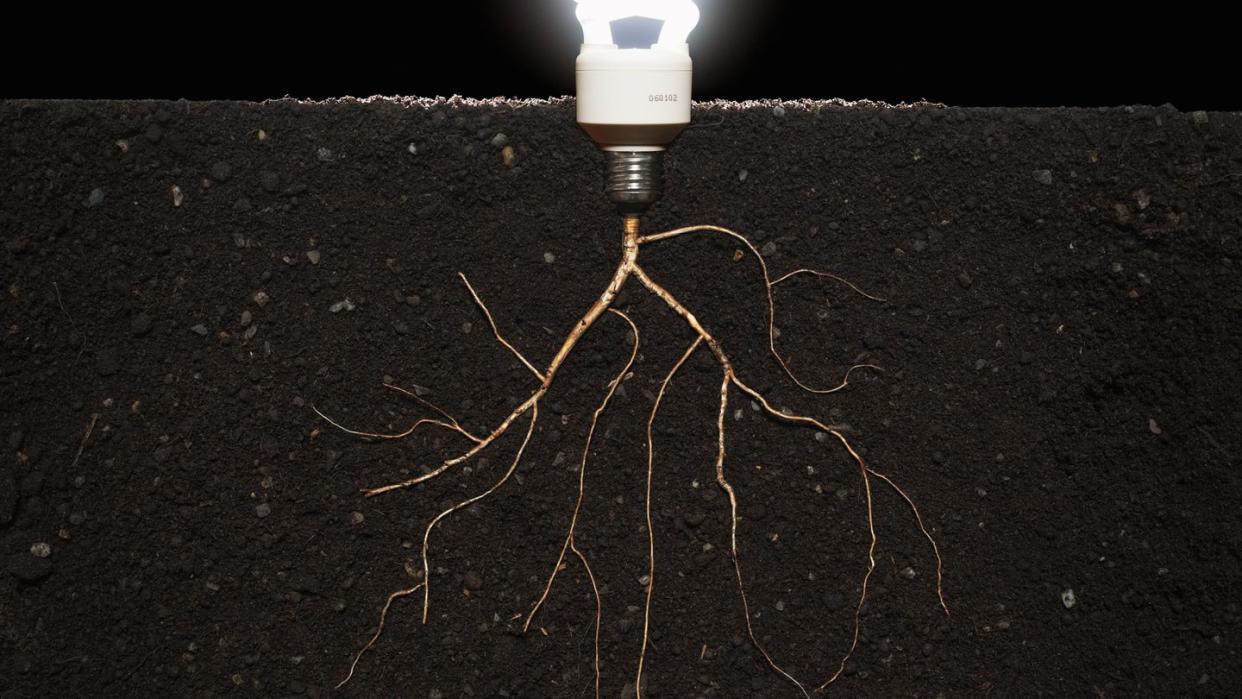Surprise! Scientists Found Earth’s Secret Underground Power Grid

"Hearst Magazines and Yahoo may earn commission or revenue on some items through these links."
Beneath our feet, a small microbe known as Geobacter sulfurreducens uses hair-like nanowires to create a kind of biological electric grid.
Scientists have now discovered the proteins responsible for creating the pathway that allows Geobacter to power these nanowires with excess electrons.
Understanding this complicated electric network can help create better biomaterials while also illuminating the processes powering the Earth's methane production and reduction.
When it comes to comfort, humans have it pretty good. Homo sapiens aren’t regularly subjected to the vacuum of space like tardigrades, nor do we cling to extra-hot, sulfur-filled hydrothermal vents on a regular basis like a variety of extremophile bacteria. And we have it a lot easier than Geobacter sulfurreducens—a bacteria that’s particularly adept at living in anaerobic environments deep within the Earth. Scientists have long marveled at how this microbe survives the inhospitable conditions found underground, but over the years, experts have slowly pieced together an explanation.
One of the biggest discoveries was that Geobacter essentially powers a microbial electric grid underneath our feet. In order to “breathe” with oxygen, this bacteria transfers excess electrons to minuscule electric “hairs” known as nanowires, which shoot off from the microbe’s surface. These hairs connect with surrounding minerals and other microbes, creating a kind of connected biological grid that makes life possible. However, scientists haven’t been able to figure out exactly what charges these hairs in the first place—at least, not until now.
Scientists from Yale University and the NOVA School of Science and Technology in Lisbon, Portugal, have found a specific family of proteins responsible for this underground electric wonderland. These proteins—specifically, cytochromes—essentially act as charging plugs for the nanowires, providing the pathway needed to release the excess electrons created through metabolic processes. The results of this study were recently published in the journal Nature Communications.
“Common soil and marine microbes of the family Geobacteraceae are important in diverse natural environments and for biotechnological applications,” the researchers wrote in the paper. “Structures of these nanowires reveal interconnected chains of cytochromes… [which] can promote rapid and insulated electron conduction over distances of several micrometers.”
Understanding the bioelectrical properties of these microbes could be vitally important for technological applications, as well as combating climate change. Exploring the electrical abilities of these microbes will hopefully lead to the development of different biomaterials, as well as advancements in bioenergy. Although extremely tiny—the microbe is only three to five nanometers wide (about 10,000 times smaller than a human hair), and its nanowires extending only a 20 nanometers beyond the microbe itself—these organisms play a central role in the Earth’s greenhouse gas processes.
“Microbes absorb 80% of methane in the ocean, a major contributor to global warming, emitted from ocean floors. However, microbes on Earth’s surface account for 50% of methane emissions into the atmosphere,” according to a Yale press statement citing the paper’s authors. “Understanding different metabolic processes might help mitigate methane emissions.”
You Might Also Like
